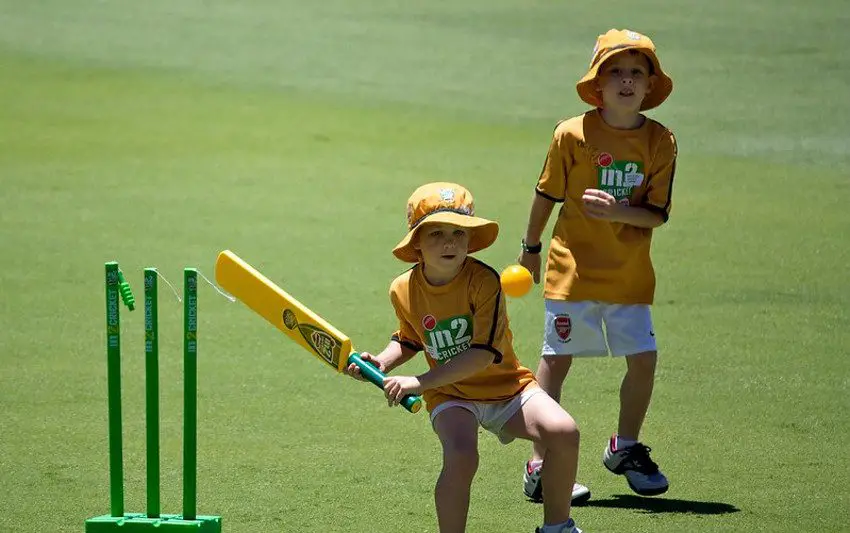Table of Contents
Cricket has always been a sport that celebrates legends — from Sachin Tendulkar to AB de Villiers, Ricky Ponting to Kumar Sangakkara. These icons defined eras with their consistency, technique, and grace under pressure. But in 2025, the winds of change are blowing stronger than ever. The spotlight is now on a new breed of players — young, fearless, data-driven, and ready to challenge traditional boundaries. The next generation of cricketers is faster, more analytical, and mentally tougher. They’ve grown up watching greats while learning through technology, data analytics, and global exposure — a transformation that even platforms like Parimatch Casino have recognized by supporting the modern, youth-driven side of the sport.

The Rise of Youth Power in Modern Cricket
The average debut age in top international teams has dropped to just 22.7 years, according to ICC’s 2024 player statistics. This marks a dramatic shift from the days when players often spent years in domestic circuits before earning an international cap. Cricket is no longer waiting for “experience” to define greatness — performance, attitude, and adaptability are the new metrics.
Players like Shubman Gill (India), Harry Brook (England), Naseem Shah (Pakistan), and Dewald Brevis (South Africa) are already commanding global attention. Their aggressive mindset, exceptional fitness, and tactical understanding reflect a generation raised on high-intensity T20 leagues and technology-enhanced training methods. These youngsters are not just following footsteps; they’re creating their own paths — breaking records, leading teams, and inspiring millions.
T20 Leagues: The Perfect Launchpad
Franchise-based T20 tournaments like the IPL, PSL, BBL, and The Hundred have revolutionized player development. They’ve become the ultimate launchpad for young cricketers to prove their worth on international stages.
In IPL 2025, over 35% of players were under 25 years old — the highest in the league’s history. Rising stars like Yashasvi Jaiswal, Rachin Ravindra, and Rehan Ahmed have demonstrated that confidence and creativity can outshine experience.
These leagues have created an ecosystem where young players can share dressing rooms with legends, learn directly from them, and test themselves against world-class competition. International scouts now monitor under-19 tournaments and domestic leagues closely, ensuring no raw talent goes unnoticed. The exposure to global audiences, varied conditions, and high-pressure situations helps shape well-rounded cricketers far earlier than in the past.
Moreover, the T20 format teaches mental resilience — the ability to think fast, recover quickly, and adapt instantly. Handling millions of viewers’ expectations, social media attention, and match-defining moments builds nerves of steel that prepare these players for all forms of cricket.
Smarter, Fitter, and Tech-Driven
Today’s cricketers are not just athletes — they are data-driven performers. The integration of AI, wearable technology, and video analytics has transformed how players train, recover, and analyze their game.
- Biomechanics helps bowlers refine their actions to generate maximum speed with minimal injury risk.
- AI-powered batting simulations recreate real-match scenarios to enhance shot selection and decision-making.
- Wearable sensors track fitness metrics like heart rate, fatigue, and muscle recovery in real time.
- Nutrition apps and mental fitness platforms guide players toward balanced physical and psychological well-being.
Cricket has become a science-backed sport — and this generation fully embraces it. The blend of skill and software has birthed smarter athletes who approach the game with analytical precision.
Global Impact: Beyond Traditional Powerhouses
The rise of youth talent is not confined to traditional cricketing nations like India, England, or Australia. Emerging teams such as Nepal, USA, and UAE are making waves through structured youth programs and international academies.
For instance, the USA’s under-23 team qualifying for the 2024 Global Qualifiers marked a historic moment for American cricket. Similarly, Nepal’s youth-led side, captained by Rohit Paudel, has earned a loyal global following due to their fearless T20 performances.
This globalization of talent signifies cricket’s expansion beyond its colonial roots. Young players from non-traditional regions now see cricket as a viable career, supported by digital platforms, social media reach, and international exposure. The game’s democratization ensures that the “next big thing” could emerge from anywhere — be it a small town in Pakistan or a high school league in Texas.
Women’s Cricket: The Parallel Revolution
While the spotlight often shines on men’s cricket, women’s cricket has quietly undergone its own youth revolution. Players like Shafali Verma, Alice Capsey, and Phoebe Litchfield are redefining how the women’s game is played — aggressive, tactical, and fearless.
The Women’s Premier League (WPL) has mirrored the men’s IPL in nurturing raw talent. Teenagers are now opening innings, leading franchises, and breaking barriers with confidence.
The increasing visibility and professionalism of women’s cricket show that the new generation’s rise transcends gender. Young female cricketers are inspiring millions, proving that cricket’s future is truly inclusive.
Leadership at a Young Age
Gone are the days when captaincy was reserved for veterans. The new generation has proven that leadership is about mindset, not mileage. Captains like Ruturaj Gaikwad, Ben McDermott, and Aiden Markram have shown tactical maturity well beyond their years.
These young leaders bring modern thinking — using analytics for field placements, trusting instinctive calls, and fostering team unity through empathy rather than authority. Their ability to blend aggression with calmness embodies the evolution of cricket leadership in the 21st century.
The Psychology of Modern Cricketers
Behind every powerful shot or fiery spell lies an equally strong mind. Today’s young players understand the importance of mental conditioning. Sports psychologists are now integral to every professional setup, helping players handle fame, failure, and high-stakes pressure.
Unlike previous generations, these athletes are open about mental health — a sign of maturity and awareness. They meditate, visualize, and train their minds with the same dedication as their bodies. This emotional intelligence is redefining professionalism in modern cricket.
Mentorship and the Passing of the Torch
Another factor fueling this youth movement is mentorship. Veterans like Virat Kohli, Kane Williamson, and Steve Smith now play crucial roles in shaping the next wave. Their guidance, shared through franchise dressing rooms and training camps, helps bridge the gap between generations.
The presence of experienced mentors ensures that while young players bring energy and innovation, they also inherit wisdom, discipline, and respect for the game’s traditions. This balance of youth and experience is what keeps cricket evolving yet grounded.
The Future is Fearless
As cricket dives deeper into the digital and data-driven era, this new generation stands ready to lead. Their confidence, creativity, and ability to adapt to evolving formats — from T10s to The Hundred — make them the sport’s greatest asset.
From street cricket to grand arenas, the message is loud and clear: the game’s future is in passionate, young hands. With platforms like Parimatch encouraging fans to stay connected to every breakthrough performance, the next generation isn’t just participating in the sport — they’re redefining it.
Cricket’s heart beats stronger than ever, powered by youth, innovation, and an unshakeable belief that the best is yet to come.


